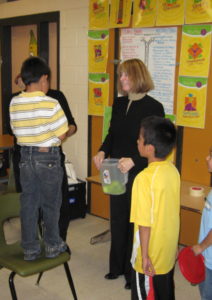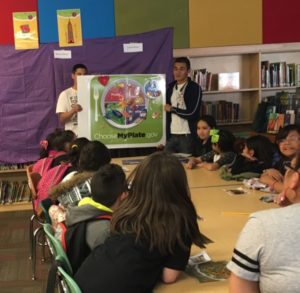Cascading as a Teaching Method
Posted On: March 24, 2018Teens as BrainWise Mentors for Elementary School Students
A successful way to boost students’ retention of the 10 Wise Ways, and a win-win situation for everyone involved, is for high school students to lead elementary school students in BrainWise-infused games and activities. This teaching method, called cascading, has been used in mentoring programs like Penn Engineering, which received a $600,000 grant to build interest in computer science by getting college, high school, and middle school students involved in learning with and from each other.
Teen Mentors Lead Young Mentees
BrainWise instructors can also use cascading as a teaching tool, and we are excited to share this approach with you. It is a fun and effective way to help teens and children hone their knowledge of BrainWise concepts and terms.
The following model, used by the Denver Mile High Rotary Club and an affiliated Interact club, can be easily replicated by other community service clubs, volunteers, and schools.
Participants:
Elementary or middle school students (student mentees). The student mentees have learned or are learning BrainWise in a classroom. The activities can be customized for the age and ability of the mentees, including special needs children and youth. The size of the group will vary according to the site, but 20 mentees is a maximum number. The sessions run for 45 to 60 minutes. The number of sessions is up to the organizers, but we have found that it is easy to organize and manage sessions when they are taught once a month for four to seven months over the school year.
High school students (student mentors). The student mentors need to be familiar with BrainWise concepts and terms. The number of student mentors depends on the group’s size and needs, but a minimum of two mentors per group is recommended.
Adult volunteers and/or school staff. The adults can create, or help create, the BrainWise Practice Activities (BPA), provide mentor transportation, coach student mentors, provide snacks and prizes, and anything else that assists the student mentors. The adults need to be familiar with BrainWise concepts and terms.
Setting:
Any space that holds the group comfortably-a classroom, library, gym, or space that holds the group comfortably-will work. Display or tape BrainWise posters at the front of the room or position the 10 Wise Ways where mentee students can see them.
BrainWise Practice Activities (BPA):
 Below are examples that show different activities created by BrainWise instructors, student mentors, and/or volunteers. They demonstrate how easy it is for the teens to lead the sessions, why it is fun for everyone involved, and why games can be a valuable way to reinforce BrainWise concepts. You and your student mentors, school staff, and volunteers can use the examples to create and customize your own activities.
Below are examples that show different activities created by BrainWise instructors, student mentors, and/or volunteers. They demonstrate how easy it is for the teens to lead the sessions, why it is fun for everyone involved, and why games can be a valuable way to reinforce BrainWise concepts. You and your student mentors, school staff, and volunteers can use the examples to create and customize your own activities.
BrainWise JEOPARDY!
There are many Jeopardy templates available online, or you can make your own version. In the picture, teen mentors are teaching BrainWise Jeopardy using a handmade game board. The mentors and mentees quickly became engaged as the adults stood on the side and observed, helping the mentors work with the limited space and keep order. The children had a blast, and the teens were surprised when the children treated them like rock stars. Jeopardy categories included Just Getting Started (general questions on BrainWise concepts), Know Your BrainWise (questions that had children apply BrainWise to problems), Fact or Opinion, Get Physical (stand-in-place exercises for questions), and Communication.
Be BrainWise with Nutrition.
 The school nurse worked with the teen mentors to develop an activity for different age groups that focused on Wizard Brain and Lizard Brain foods, and how to use thinking skills when reading food labels and eating. The student mentees worked in teams and identified why popular foods were Wizard Brain of Lizard Brain choices
The school nurse worked with the teen mentors to develop an activity for different age groups that focused on Wizard Brain and Lizard Brain foods, and how to use thinking skills when reading food labels and eating. The student mentees worked in teams and identified why popular foods were Wizard Brain of Lizard Brain choices
BrainWise Who Wants to be a Millionaire?
BrainWise instructor Karyn Singley Blair has reinforced Brainwise concepts for years using games, including
Who Wants to be a Millionaire? Her special-needs high school students never tire of the interactive format games offer. The game also offers teen mentors an opportunity to help their peers, as well as younger mentees, gain important practice applying and using the 10 Wise Ways.
BrainWise questions and problems can be easily integrated into games, creating wide-ranging opportunities for ongoing practice benefits for both teen mentors and younger mentees.